Masterpiece Story: Portrait of Madeleine by Marie-Guillemine Benoist
What is the message behind Marie-Guillemine Benoist’s Portrait of Madeleine? The history and tradition behind this 1800 painting might explain...
Jimena Escoto 16 February 2025
24 June 2024 min Read
Summer Evening on Skagen Sønderstrand by Peder Severin Krøyer is a masterpiece of Danish Impressionism. It not only captures the beauty of the Danish landscape but also uses hidden mathematics to create a dynamic composition.
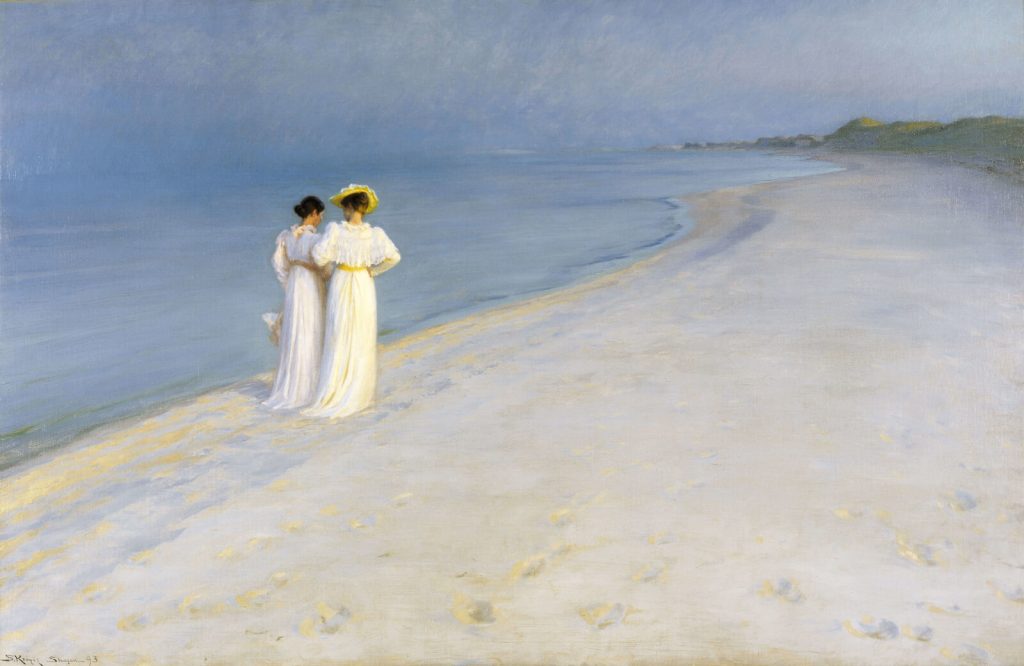
Peder Severin Krøyer, Summer Evening on Skagen Sønderstrand, 1893, Skagens Museum, Skagen, Denmark.
Peder Severin Krøyer was an incredibly talented artist who rapidly ascended into the Danish art world. At the young age of 14 years old, he was accepted into the Royal Academy of Fine Arts in Copenhagen, Denmark and he soon became a successful portrait painter that received many private commissions. In 1882 he was drawn to Skagen, a seaside fishing village on the Kattegat Strait, where he desired to establish an artists’ colony. Therefore, by 1891 Krøyer and his wife, Marie, eventually lived there permanently. It was during this vibrant seaside atmosphere that Peder Severin Krøyer created his most iconic painting – Summer Evening on Skagen Sønderstrand. Certainly, it is a masterpiece of Danish Impressionism.
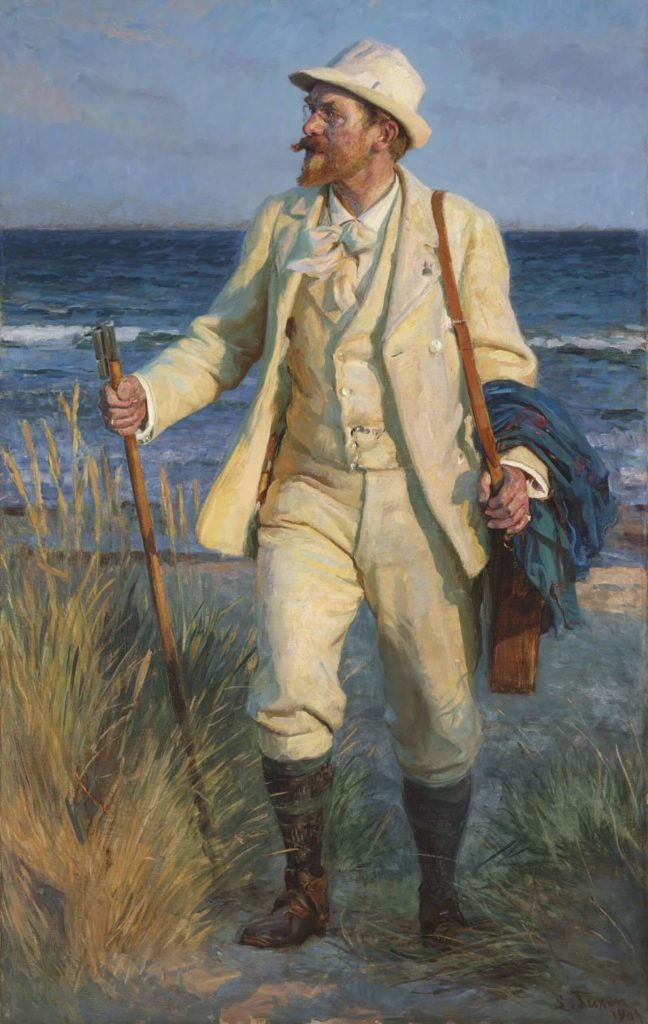
Laurits Regner Tuxen, Portrait of Peder Severin Krøyer, 1904, Hungarian National Gallery, Budapest, Hungary.
Summer Evening on Skagen Sønderstrand is an oil on canvas measuring 150 cm wide by 100 cm high (59 in by 39 in). It depicts two women walking along the shoreline of an empty beach. The sun is setting to the back right of the two women as their dresses are illuminated and cast shadows to their front left. Nevertheless, the composition is dominated by shades of white and blue. Furthermore, the cream cotton dresses sympathize with the pale beach sand while the shimmering blue water blends into the overcast dark sky.
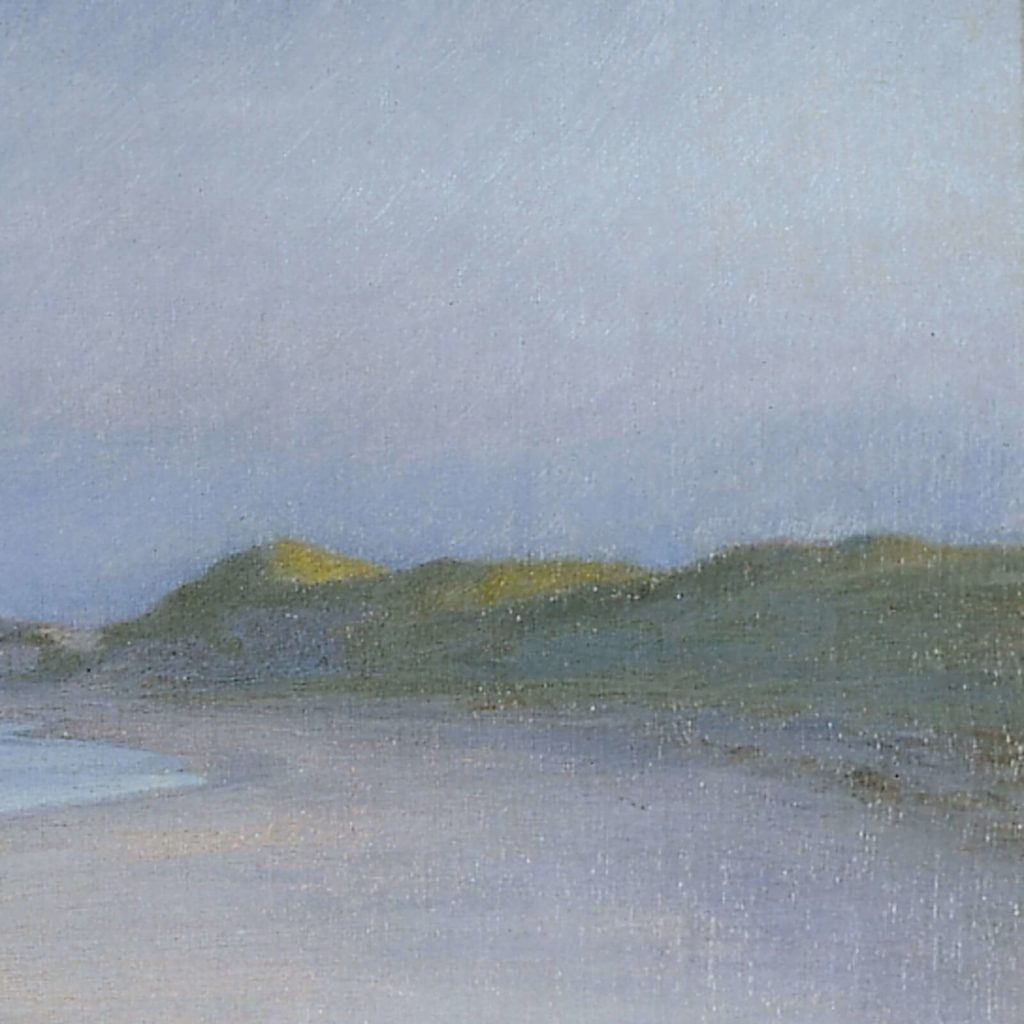
Peder Severin Krøyer, Summer Evening on Skagen Sønderstrand, 1893, Skagens Museum, Skagen, Denmark. Detail.
The overall composition of the painting seems quite relaxed and informal. However, nothing has been left to chance. The three main elements of the painting (women, shoreline and horizon) have been strategically placed according to mathematical calculations. If the painting is divided into one-third proportions (red lines), the women are placed one-third from the left side of the canvas horizontally, hence; their heads, a point of interest, are placed vertically one-third from the top edge of the canvas. Their bodies are, therefore; positioned to be one-third by one-third on the canvas which creates a dynamic off-center visual point.
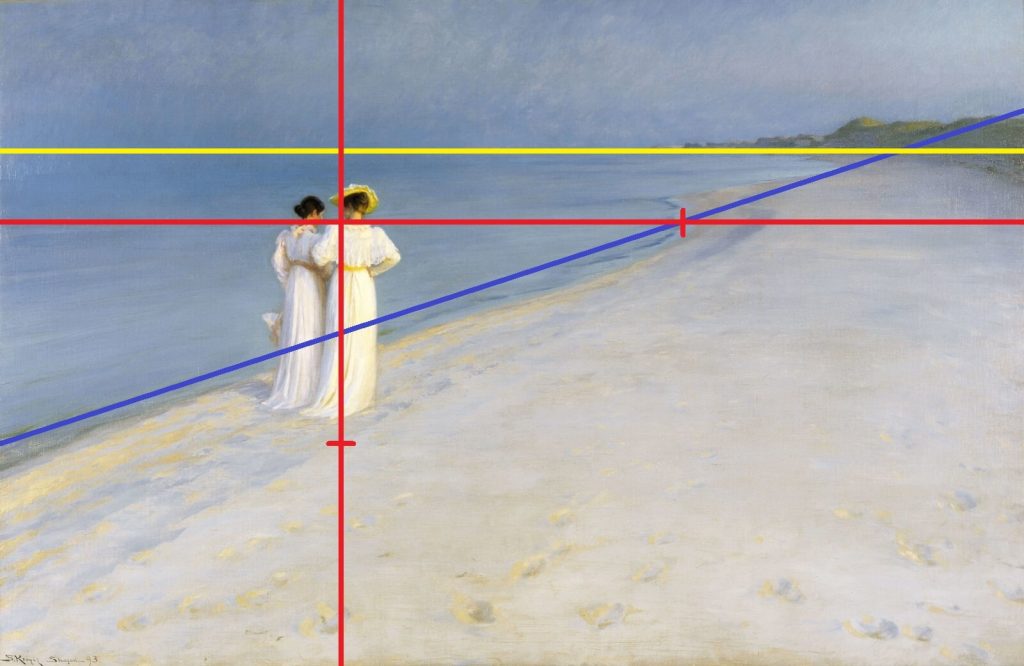
Mathematical Overlays. Peder Severin Krøyer, Summer Evening on Skagen Sønderstrand, 1893, Skagens Museum, Skagen, Denmark.
In addition, the shoreline (in blue) follows the one-third proportions for its diagonal sweep across the canvas. It begins on the left edge one-third from the bottom. It then moves upwardly right towards another intersection of one-third proportions. The intersection is where a line one-third from the top meets a line one-third from the right. Thus, the shoreline’s steep trajectory across the canvas heightens the linear perspective of the beach scene. Consequently, it creates the illusion of a vast distant beach stretching far ahead of the two women.
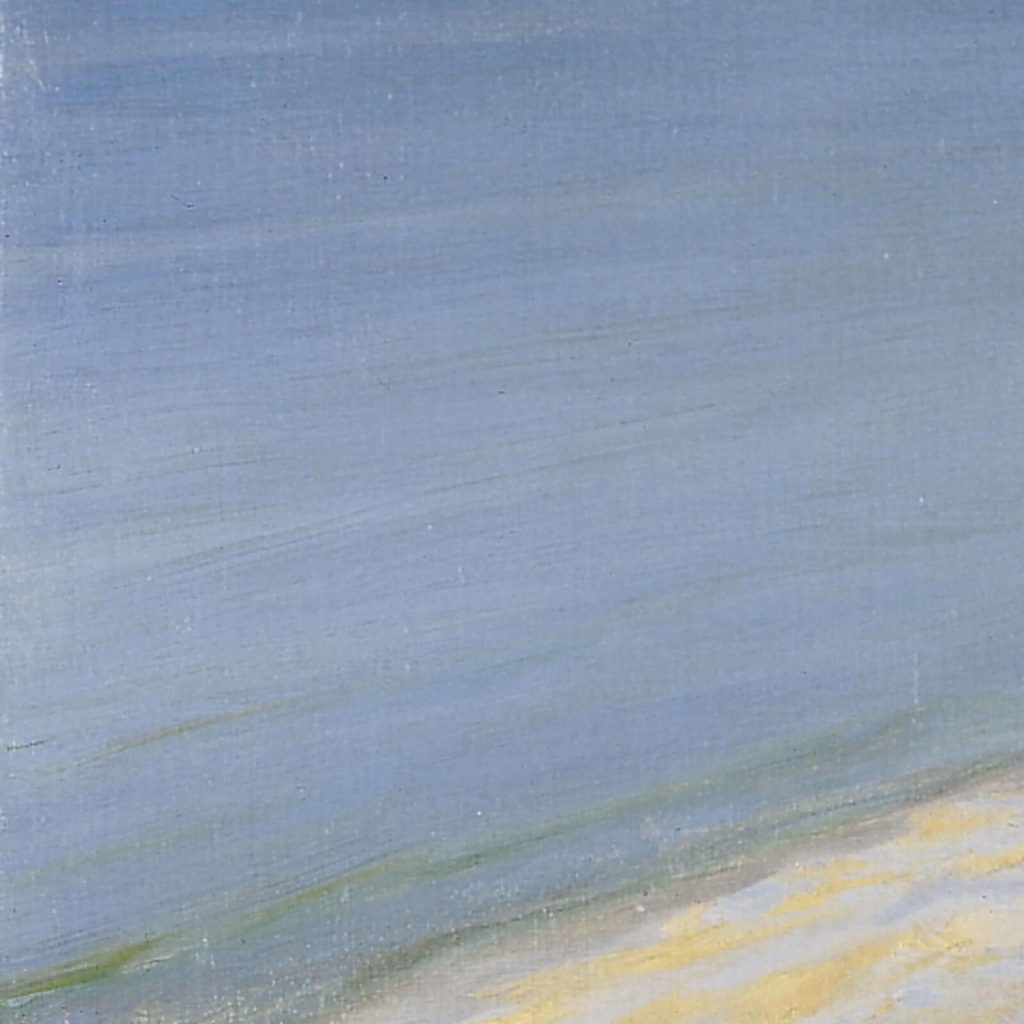
Peder Severin Krøyer, Summer Evening on Skagen Sønderstrand, 1893, Skagens Museum, Skagen, Denmark. Detail.
The horizon line (in yellow) is one-fourth from the painting’s top edge. It begins with the hilly green landscape on the right, follows the pale ribbon of sand, and then blurs where the sea and sky meet. Its high placement increases the painting’s uncentered layout. It creates imbalance but also allows a greater expanse of sand to dominate both the foreground and midground.
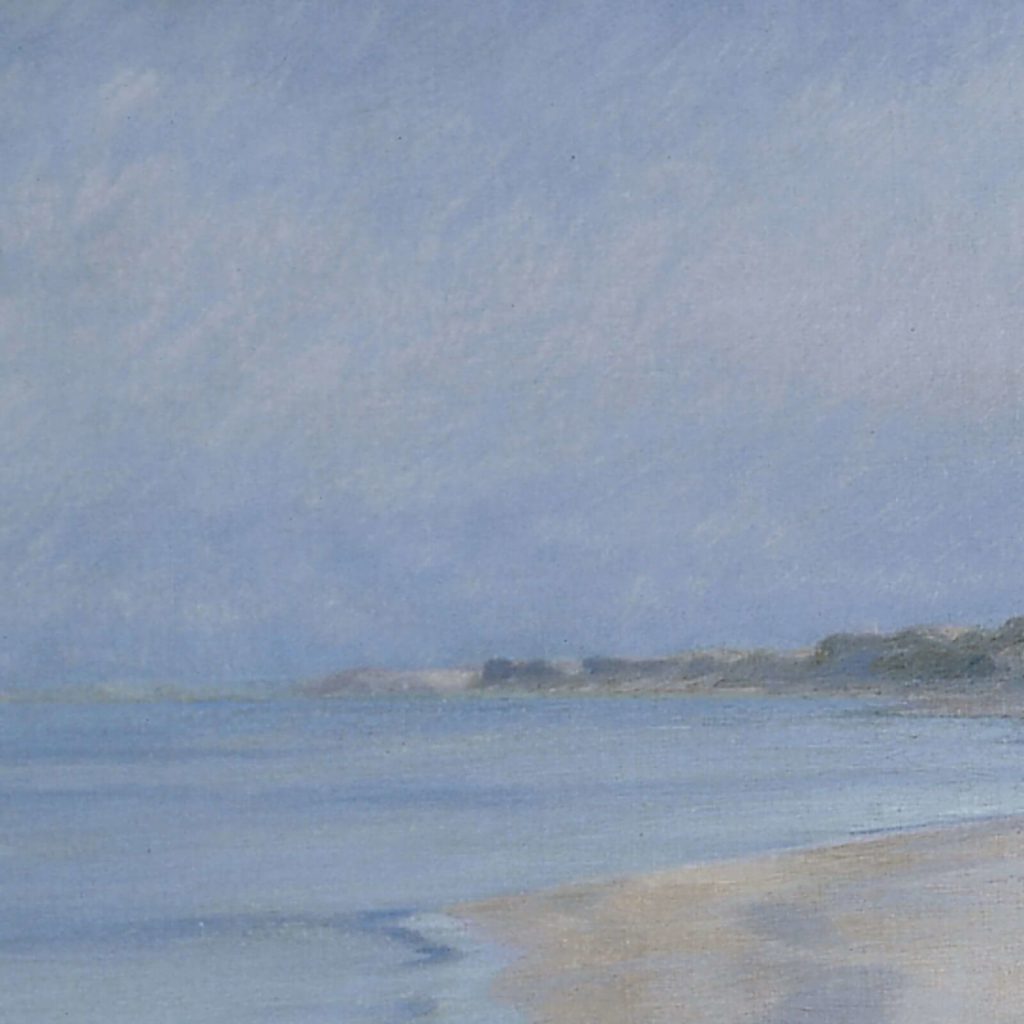
Peder Severin Krøyer, Summer Evening on Skagen Sønderstrand, 1893, Skagens Museum, Skagen, Denmark. Detail.
Who are the two walking women that dominate the foreground? They are the artist’s wife, Marie Krøyer, and a close friend, Anna Ancher. According to Peder Severin Krøyer, a dinner party had just finished, and the two friends decided to take a late evening stroll along the beach. What are they confidentially discussing? Perhaps Mrs. Krøyer is discussing the recent erratic behavior of her husband. He was sadly beginning to have some strange tendencies even by 1893. Unbeknownst to the two women and Peder Krøyer at the time, his condition would deteriorate, and he would eventually be institutionalized in 1900 for severe mental illness. So, do we perhaps witness a delicate conversation in a delicate landscape?
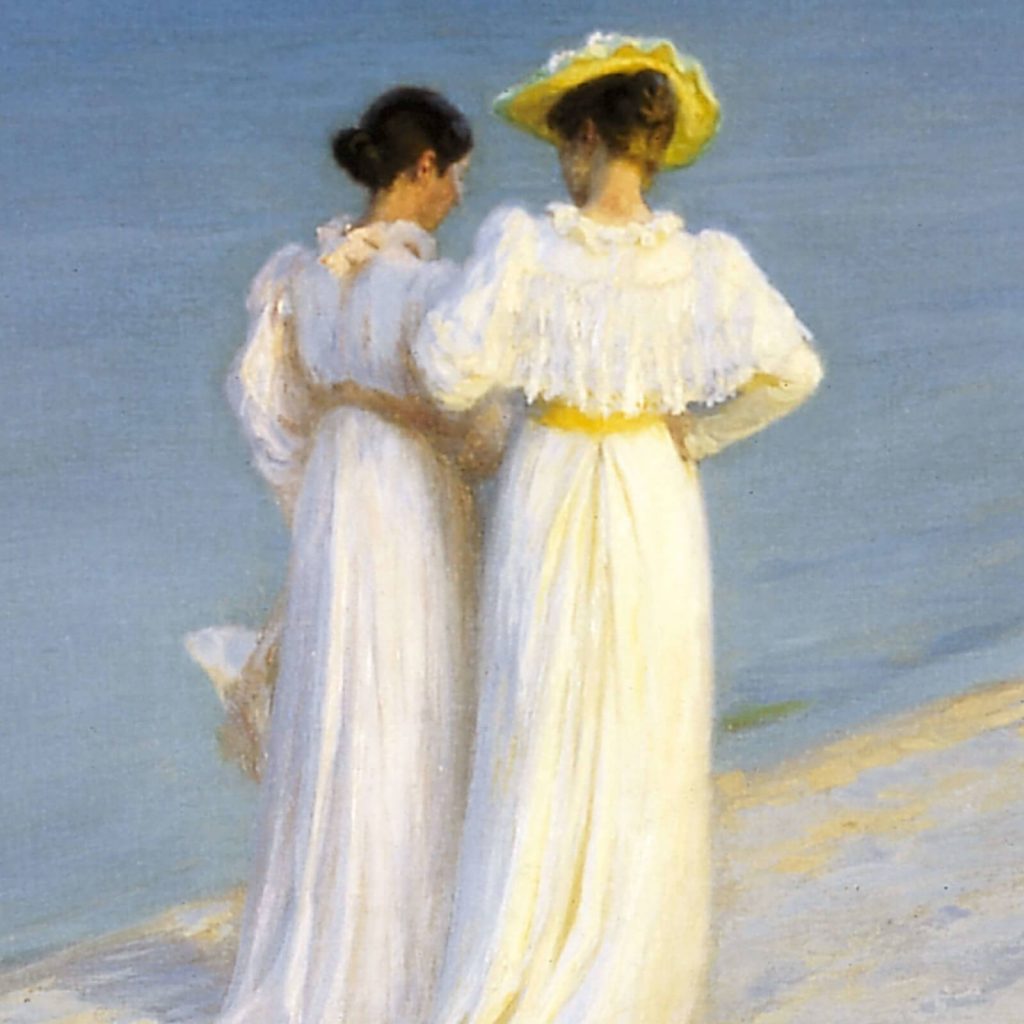
Peder Severin Krøyer, Summer Evening on Skagen Sønderstrand, 1893, Skagens Museum, Skagen, Denmark. Detail.
Summer Evening on Skagen Sønderstrand was first displayed in 1895, and it was greatly hailed as a masterpiece. It was immediately bought and held in various private collections until 1985 when it was finally donated by its last owner to the Skagens Museum in Skagen, Denmark. Nevertheless, for 90 years the painting was only appreciated by a small private audience, and it was mostly forgotten by the larger art world. Upon its donation, it was “rediscovered” and hailed as a “lost” masterpiece. What would Peder Severin Krøyer think about his painting’s re-emergence a century after its creation? Would he be amused or annoyed? Whatever his feelings, the modern world appreciates its delicate colors, strong lines, and harmonious atmosphere. It is a meditation in blue and white. It is Danish Impressionism. It is simply lovely.
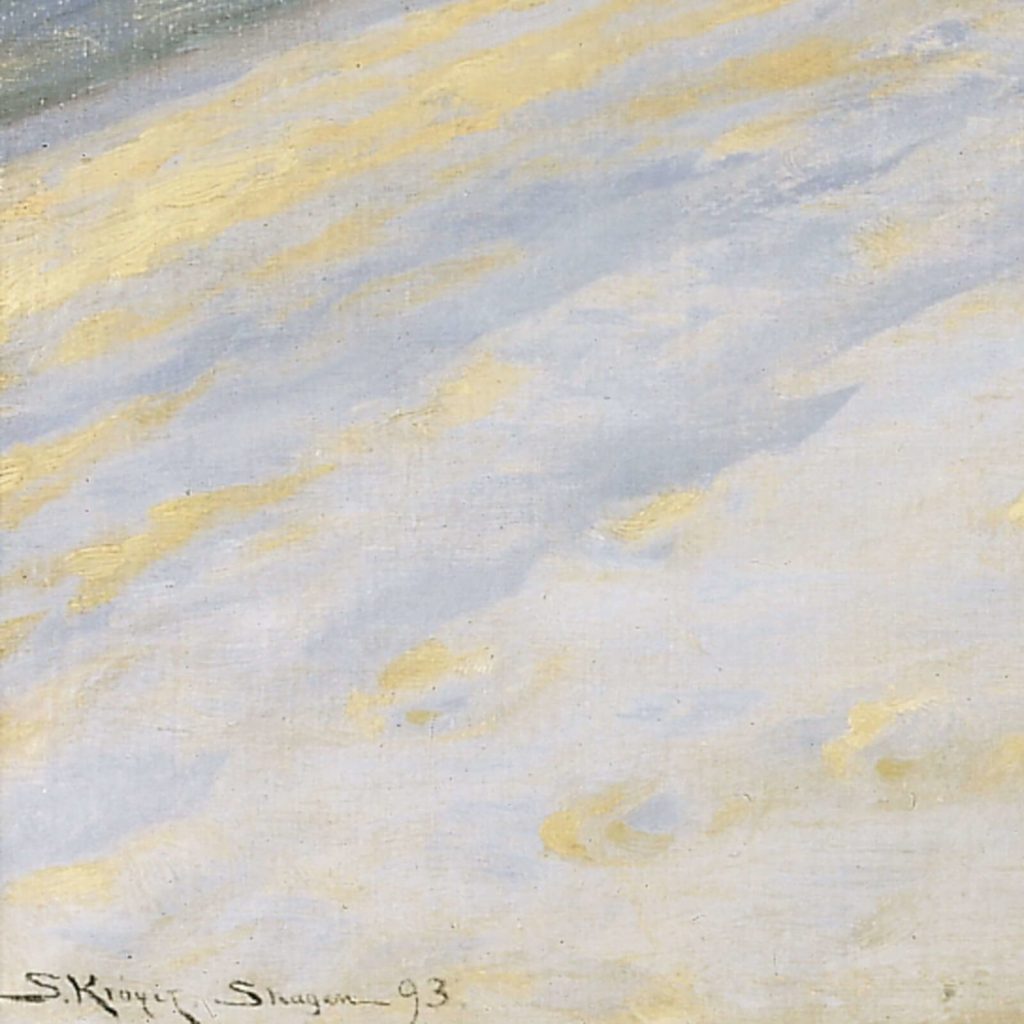
Peder Severin Krøyer, Summer Evening on Skagen Sønderstrand, 1893, Skagens Museum, Skagen, Denmark. Detail.
“Peder Severin Krøyer.” Artists. Skagens Museum, Skagen, Denmark. Retrieved 8 April 2023.
“Portrait of Painter Peder Severin Kröyer.” Collection. Hungarian National Gallery, Budapest, Hungary. Retrieved 9 April 2023.
“Summer Evening on Skagen Sønderstrand.” Collection. Skagens Museum, Skagen, Denmark. Retrieved 8 April 2023.
DailyArt Magazine needs your support. Every contribution, however big or small, is very valuable for our future. Thanks to it, we will be able to sustain and grow the Magazine. Thank you for your help!